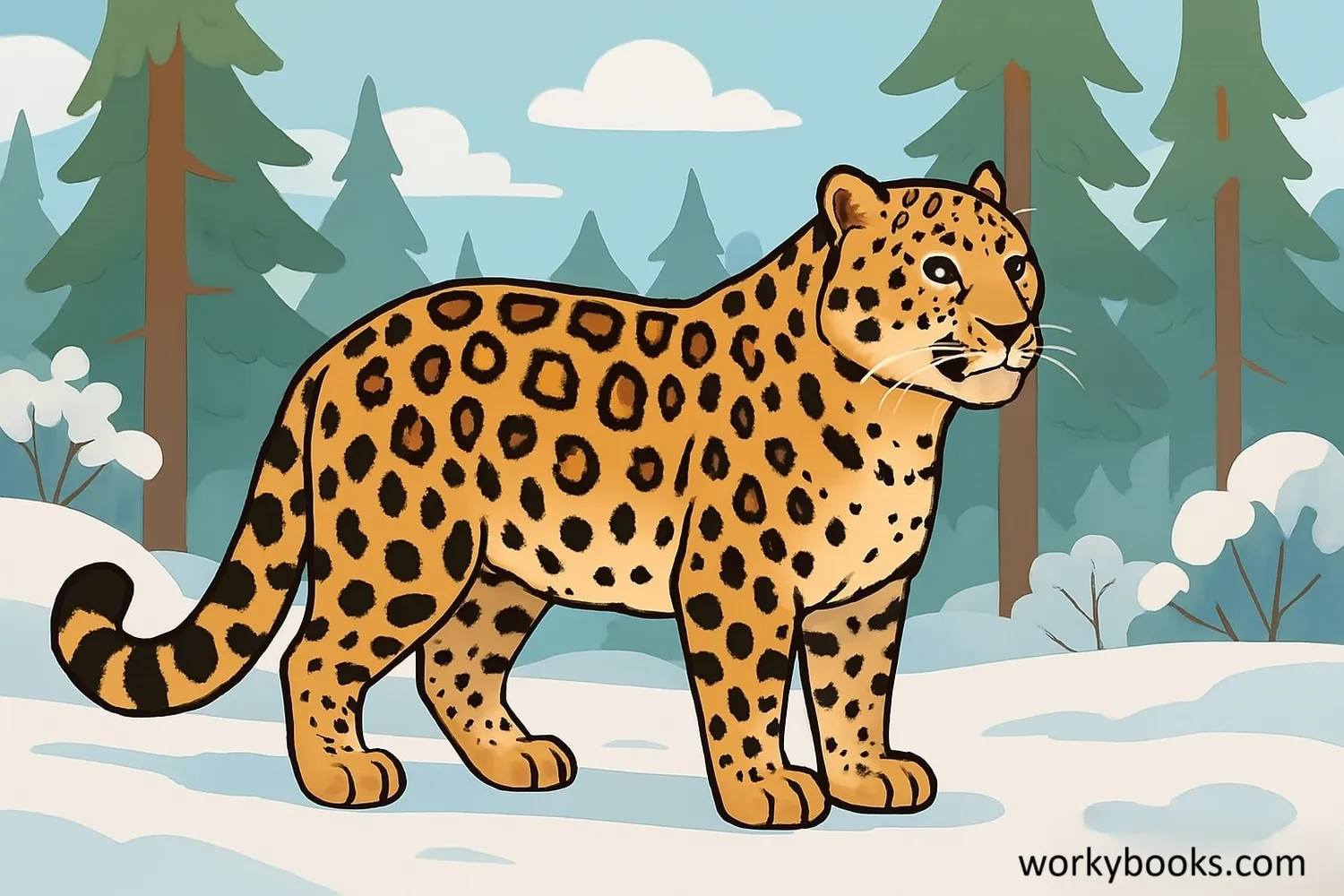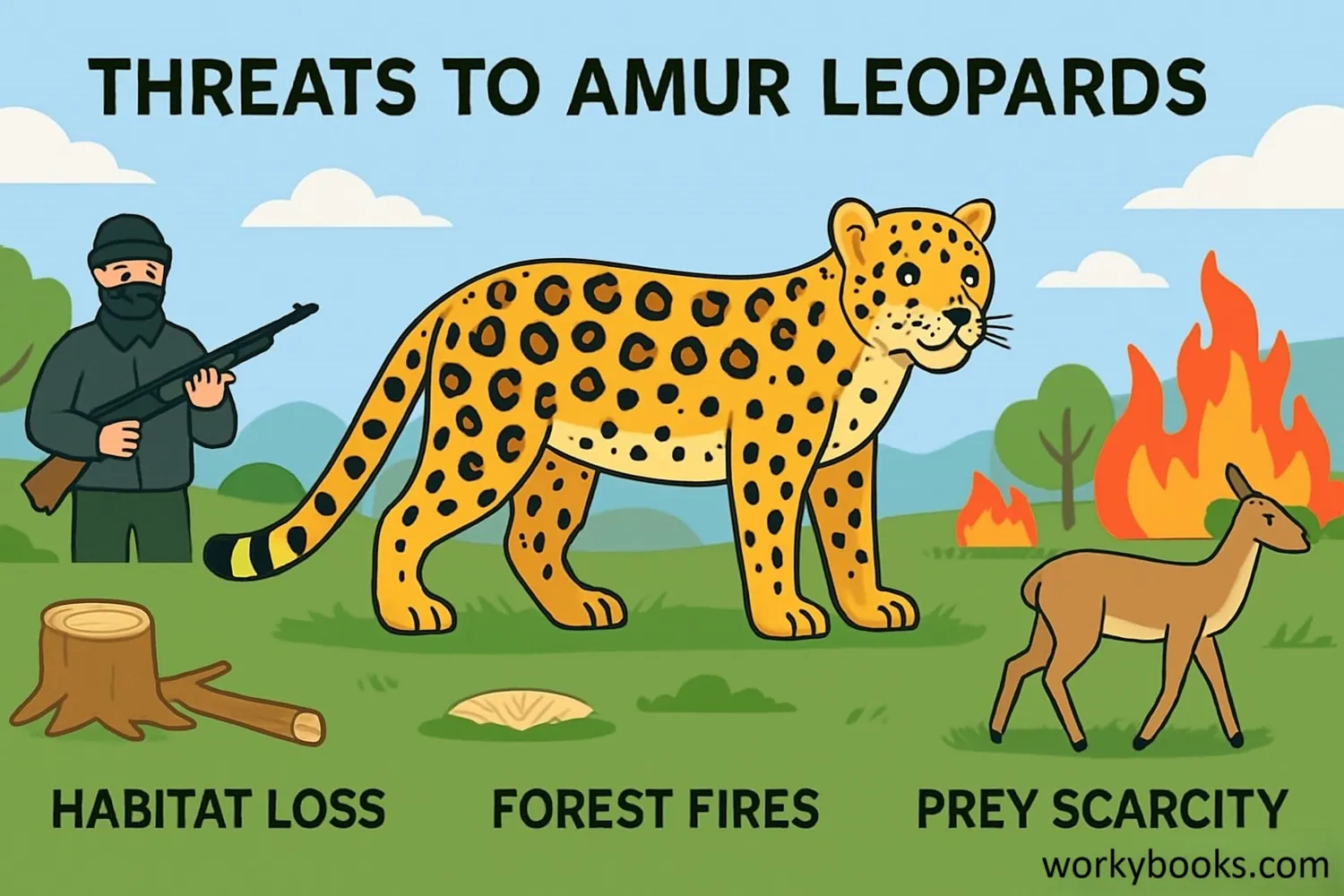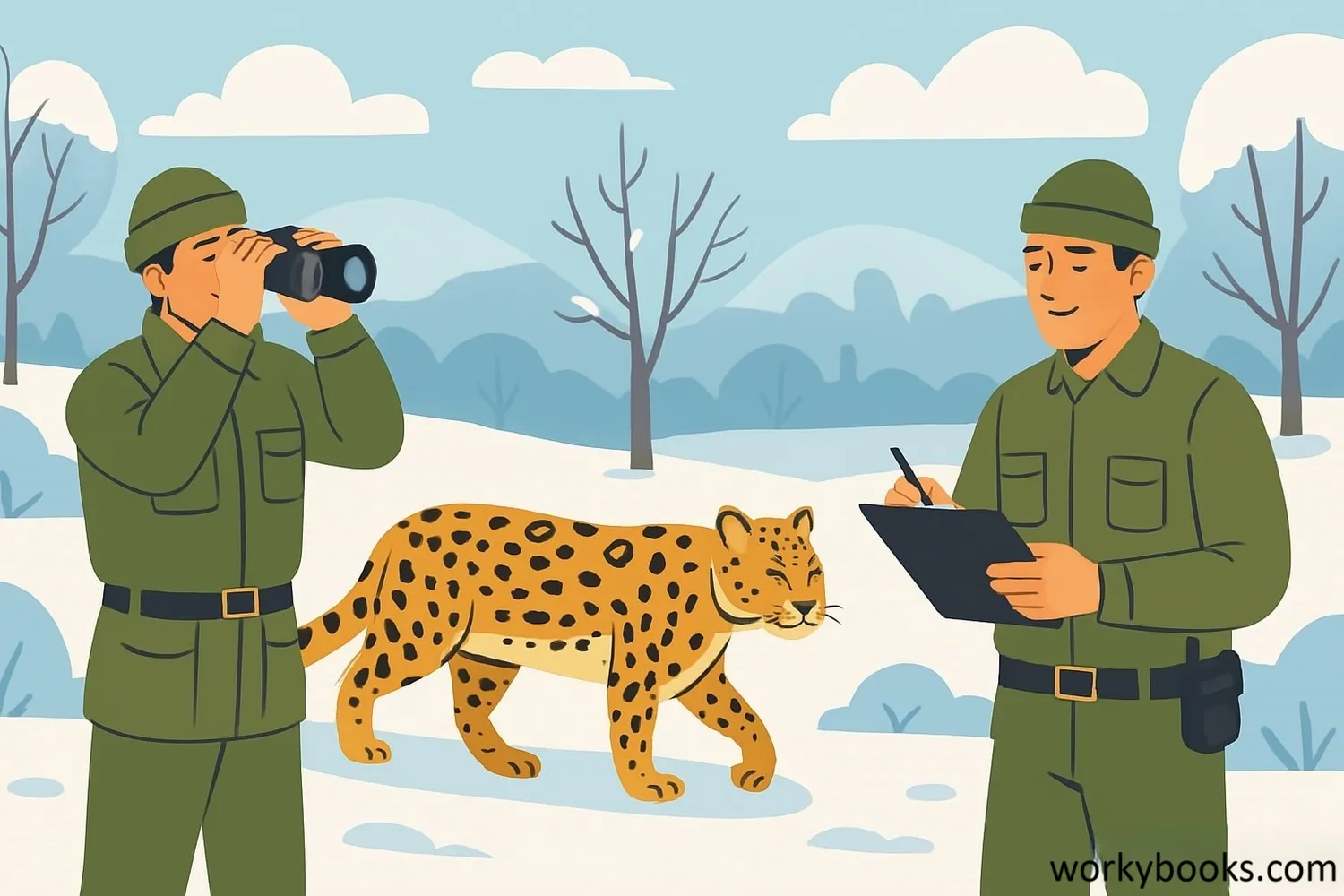Amur Leopard: The Rarest Big Cat - Definition, Examples, Quiz, FAQ, Trivia
Discover facts about this critically endangered leopard subspecies and conservation efforts
What is an Amur Leopard?

The Amur leopard is a critically endangered leopard subspecies native to the Russian Far East. These magnificent big cats are known for:
Distinctive appearance: They have beautiful spotted coats that help them blend into their forest environment. In winter, their fur grows thicker and paler to provide camouflage in snowy conditions.
Size and abilities: Amur leopards are excellent climbers and swimmers. They typically weigh 70-105 pounds and can leap more than 19 feet horizontally and 10 feet vertically!
Behavior: These solitary cats are most active at dawn and dusk. They patrol large territories that can span up to 120 square miles.
Critical Status!
The Amur leopard is one of the world's rarest big cats with only about 100 individuals left in the wild.
Habitat and Range
Amur leopards live in a very specific environment that's quite challenging:
Location: These rare cats are found only in the temperate forests of the Russian Far East and possibly in the Jilin Province of northeast China.
Climate: Their habitat experiences extreme seasonal variations, with temperatures ranging from -4°F in winter to 86°F in summer. The region receives heavy snowfall each winter.
Preferred terrain: They inhabit mountainous areas with rocky outcrops and dense forests, which provide cover for hunting and raising young.
Forest Dwellers
Live in temperate mixed forests with coniferous and deciduous trees
Mountain Areas
Prefer rocky, mountainous terrain with cliffs and outcrops
Winter Adaptation
Thick winter coats and large paws help navigate deep snow
Habitat Loss
Amur leopards have lost over 80% of their historical range due to human activities.
Why They're Endangered

The Amur leopard is critically endangered due to several serious threats:
Poaching: Illegal hunting for their beautiful spotted fur remains a significant problem. Despite legal protection, their pelts can fetch high prices on the black market.
Habitat loss: Human development, logging, and forest fires have destroyed much of their natural habitat. Roads and railways fragment their territory, making it difficult to find mates and prey.
Prey scarcity: The leopards' main prey species (roe deer and sika deer) have declined due to overhunting by humans and habitat loss.
Inbreeding: With such a small population, genetic diversity is low, making the species more vulnerable to diseases and birth defects.
Population Crisis
In the 1970s, only about 30 Amur leopards remained in the wild. Conservation efforts have helped increase numbers, but they remain critically endangered.
Conservation Efforts

Several important conservation efforts are helping protect Amur leopards:
Protected areas: The Land of the Leopard National Park was established in Russia in 2012, protecting about 60% of the Amur leopard's remaining habitat.
Anti-poaching patrols: Specially trained rangers patrol leopard habitats to prevent poaching and monitor leopard populations using camera traps.
Prey restoration: Conservationists are working to restore populations of the leopards' prey species by cracking down on illegal hunting and improving habitat.
International cooperation: Russia and China have established a transboundary protected area to safeguard leopard habitat crossing both countries.
Protected Parks
National parks preserve critical habitat areas
Population Monitoring
Camera traps help track leopard numbers and health
Global Awareness
Education programs raise awareness worldwide
How you can help:
• Support conservation organizations working to protect Amur leopards
• Learn and share information about these rare cats
• Choose sustainable wood products to protect forests
• Advocate for wildlife protection policies
Amur Leopard Quiz
Test your knowledge about these rare big cats with this quiz! Answer all 5 questions to see how much you've learned.
Frequently Asked Questions
Here are answers to common questions about Amur leopards:
Fun Amur Leopard Trivia
Discover amazing facts about these rare big cats!
Winter Warriors
Amur leopards have the thickest fur of all leopard subspecies, with hairs growing up to 3 inches long in winter to protect against temperatures as low as -30°F!
Population Recovery
Thanks to conservation efforts, the wild population has increased from just 30 individuals in the 1970s to about 100 today - still critically low but showing progress!
Territorial Markings
Amur leopards mark their territories by scraping the ground with their hind feet and leaving scent marks on trees. Each leopard's territory can be up to 120 square miles!
Spot Patterns
Each Amur leopard has a unique spot pattern, much like human fingerprints. Researchers use these patterns to identify individuals in camera trap photos.


